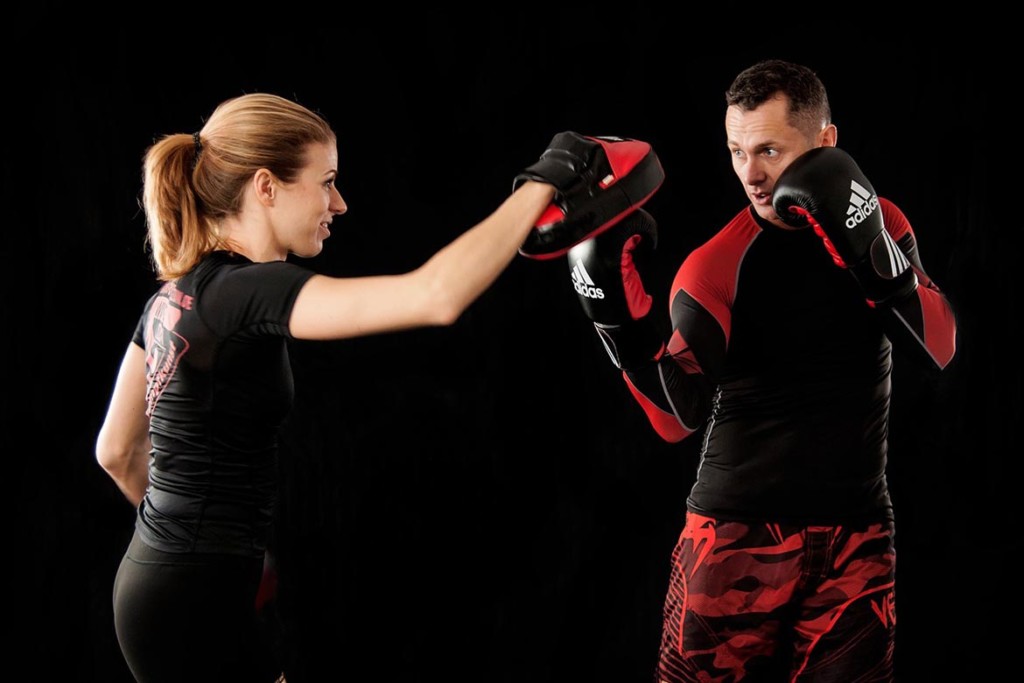Your boxing stance is the foundation for your boxing and getting it right is very important if you are a beginner. This is one of the most important elements of this sport.
However, if you try to copy the stance that your favorite boxer uses, it might not work for you. You need to find the boxing stance that brings you strength and at the same time, hides your weaknesses, according to RDX Sports.
The boxing stance that you use should be one that is suited to your style, your abilities and also your skills at the moment. It should also give you range and balance, power and defense, flexibility and security, and stability and mobility.
“The proper boxing stance will give you solid power in each hand but still allow you to efficiently defend yourself if you get counter-punched. The proper boxing stance gives you good reach with both hands without making you reach to land your punches or vulnerable to getting pushed off balance. The correct boxing stance will allow you to throw a wider variety of punches without leaving you too exposed. Lastly, the right boxing stance for you will allow you to stand firm on your ground but still have the ability to move away if needed”, you can read in Expert Boxing.
The boxing stance explained
There are several characteristics a good boxing stance should have for it to be effective, such as the foot placement and the toe-heel alignment.
The foot placement refers to where you place each of your feet on the ground. The way you do it will determine your advantages and disadvantages when boxing with someone else. It affects your offense, mobility and defense.
As for the toe-heel alignment, this has to do with determining how to place your feet considering your shoulders. They should be at a shoulder-width distance from each other.

Different types of boxing stances
A correct boxing stance will give you a solid balance and will not sacrifice mobility. It will also allow you to have power and reach your opponent with your hands, as well as defend yourself efficiently.
Then, there is the forward boxing stance. It is perfect for an aggressive boxing style and to chase your opponent with hooks if you want to. However, you will not be able to pivot very much in this stance, so you will have less power on your right hand and left crosses. Your body will also be heavily exposed and it will be hard to move backward and easy to lose balance.
The square stance is also not the best to use since you will face similar problems as being too forward like we explained just above. Your opponent will be able to punch you right in the middle and it will be very hard to defend yourself if he throws up and down at your head and body. You can also fall back because it will be easy to lose your balance. Finally, your jab will have less reach.
You should also not position your feet too straight. This will cause your strong hand, which is the right cross, to be too far and therefore, it will be hard to reach your opponent. In addition, it is also a position where you can lose your balance easily. The only advantage this boxing stance has is that it is very easy to run away.
Finally, a wide stance will give you low mobility and also bad balance. It is sometimes believed that a wide stance will give you more balance, but it is actually the opposite. What gives you more balance is a lower stance, not a wider stance. Wide stances will give you both poor mobility and it will be easy to be pushed off balance. In fact, people you use wide boxing stances have to jump to move around because their feet are anchored to the ground.
Boxing stance principles
Here are some principles you need to consider regarding your boxing stance:
1. Lower body
Your back foot heel should always be slightly lifted off the ground. The front heel can be planted on the ground but your weight should be towards the front of your foot. Spread your feet shoulder-width, although they can be a few inches wider if you want.
Always keep your knees bent for more power, balance and mobility. The hips need to be relaxed for better balance and power. Finally, distribute your weight 50/50 between the front and back legs.
2. Upper body
Your shoulders and arms should be relaxed and your elbows down and in. Your hands, up, chin down. Turn your shoulders slightly towards your opponent but not too squared to leave your stomach open. The front arm should cover most of your body and the rear hand at the cheek or eyebrow level.
Whatever lower body stance you choose to use, you should pair it with an upper stance that complements it. For instance, if your foot positioning does not allow for much mobility, do not pair it up with a hand positioning that offers a low defense.
How to get into the proper boxing stance
1. Get into the correct position
Both your feet should be solid on the ground. Do not tilt your hips and do not align your feet with each other. In other words, the feet should not make a direct line.
2. Triangular stance
Your front toe should be in line or off line with your rear heel. Raise your rear heel and do not cross your feet with each other or you will lose balance.
3. Feet shoulder apart
As we said before, your feet should be shoulder apart from each other or a few inches wider. The front leg should be stiff and the back leg bent.
4. Position your feet at an angle
Place your front foot at 45 degrees, turned inward and your back foot 45 degrees as well. The weak hand goes in front of you and the strong hand back. You can adjust the degrees a little bit if you need to.

Different boxing stances
You can use a wider stance if you want to be more defensive. Place your front toe in line, cutting off the rear heel and widen your triangular stance. This will make your upper body a smaller target to hit. As for your front shoulder, it should be pointing to your opponent. It is a good stance for jabs and long-range.
A squarer stance will give you more offense potential. To get into it, make your triangular stance shorter. It will give you a little bit less defense and more offense. Use it for close-range fighting and for uppercuts.
Then, there is the compromise stance where you align your front shoulder with your front heel. The front foot should be about 25 degrees inward and the rear foot pointed directly at your opponent. This is also for close range and you can shorten it for speed.
Common mistakes with boxing stances
There are common mistakes that beginner boxers make regarding their stances. Some of them, according to RDX Sports, are:
- Squaring their shoulders too much and therefore giving the opponent a larger target to hit;
- Not aligning the front foot and the back foot, which messes with the balance;
- Being flat-footed;
- Raising the chin above the hands;
- Putting all the weight on the front leg.
You can examine your stance using a full-size mirror and see if you are making any mistakes. Your boxing coach should also help you fix what you are doing wrong since it is often hard to see for ourselves and examine our own stance.
Benefits of a strong boxing stance
A proper boxing stance has many benefits. It is as simple, or complicated, as making subtle changes that will help you achieve what you want with your boxing. Whether it is a more defensive or offensive stance, you will need to make some adjustments.
A good boxing stance will help you always maintain your balance, no matter what, and at the same time, reach your opponent. If you have a good stance you are less likely to lose your balance when you react quickly. It will also let you throw a wider variety of punches without being too exposed.
However, a stance that works for one situation may not work for another one. Also, your height and weight have an impact on the stance.
Do you have any tips about boxing stances? How do you work on bettering yours? Tell us below in the comment section!





